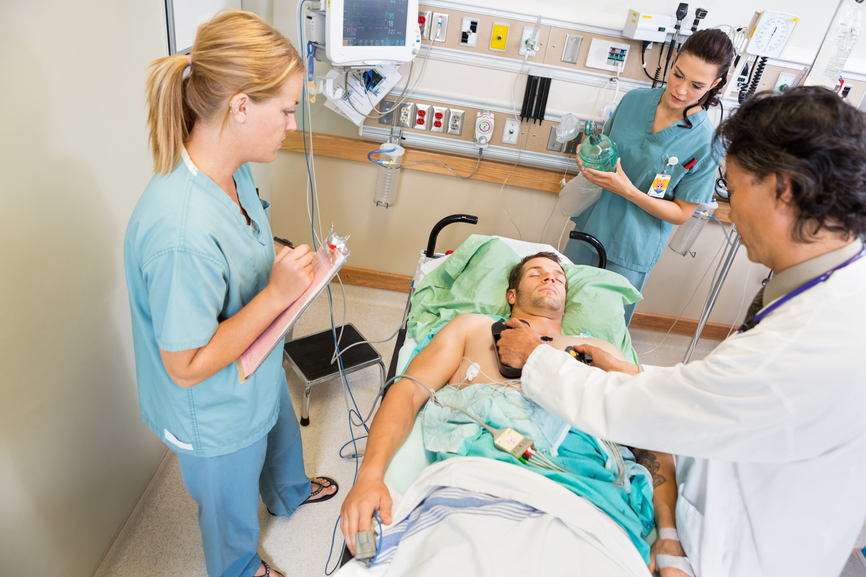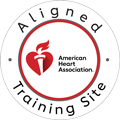In the world of emergency medicine, few moments are as pivotal as the return of spontaneous circulation, or ROSC. Achieving ROSC means that a patient’s heart has started beating again after cardiac arrest, a critical milestone in advanced cardiac life support (ACLS). However, this is far from the end of the battle. The period following ROSC is often more complex and equally vital to survival and recovery. Understanding what happens after cardiac arrest—and how to optimize post-ROSC care—can drastically improve outcomes for patients who have already beaten the odds. This article dives into the structured, evidence-based care required after ROSC to give patients the best chance at long-term survival and neurological recovery.

Immediate Post-ROSC Assessment
ROSC is defined as the restoration of a palpable pulse and effective blood circulation after a period of cardiac arrest. In the context of ACLS, it signals the temporary success of resuscitation efforts, but also ushers in a high-risk phase. Statistically, while over 40% of in-hospital cardiac arrest patients achieve ROSC, only about 25% survive to discharge. These sobering numbers highlight the importance of meticulous care during the post-ROSC period. Every minute counts, and every decision can influence a patient’s trajectory. It is during this time that rapid assessments, precise interventions, and coordinated teamwork make a profound difference.
Primary ABCDE assessment
The immediate post-ROSC phase begins with the ABCDE assessment—Airway, Breathing, Circulation, Disability, and Exposure. Ensuring that the airway is secure and the patient is adequately ventilated is the priority. Breathing is closely monitored to maintain oxygenation without overexposure to high oxygen levels. Circulation involves stabilizing blood pressure, ensuring adequate perfusion, and preparing for further interventions. A rapid neurological check helps determine the patient’s level of responsiveness and guides further diagnostic steps. Establishing clear priorities in these first moments, such as initiating targeted temperature management or addressing reversible causes, lays the foundation for effective post-arrest care.
Post-Cardiac Arrest Care Systems
Post-cardiac arrest care requires more than individual skill—it depends on a systems-based approach. Integrated care pathways ensure consistency across departments, from the emergency room to the intensive care unit. Each team member has defined roles, from airway management to hemodynamic stabilization. Effective communication is essential, especially during transitions between care teams or locations. A structured handoff protocol ensures that no critical information is lost. Meanwhile, documentation of ROSC time, interventions used, and patient status must be prompt and thorough, serving as a roadmap for ongoing care and legal accountability.
Ventilation and Oxygenation Management
Maintaining proper oxygenation and ventilation is a delicate balance in the post-ROSC period. Oxygen saturation should be kept between 92% and 98% to avoid the dangers of both hypoxia and hyperoxia. Mechanical ventilation may be required for patients unable to breathe adequately on their own. It’s important to avoid excessive ventilation rates or tidal volumes, as these can worsen hemodynamic instability. End-tidal CO2 monitoring helps assess ventilation effectiveness and perfusion, guiding real-time adjustments. Consistent monitoring allows for timely interventions that support brain and organ function.
Hemodynamic Stabilization
Hemodynamic stability is a cornerstone of post-ROSC care. Target blood pressures are established—generally, maintaining a mean arterial pressure (MAP) above 65 mmHg is essential to ensure adequate cerebral and coronary perfusion. Vasopressors like norepinephrine or dopamine may be administered if hypotension persists, while inotropic agents help improve cardiac output in cases of poor myocardial function. Fluid resuscitation must be carefully titrated; both under-resuscitation and fluid overload can be detrimental. Invasive hemodynamic monitoring techniques, such as arterial lines or central venous catheters, offer real-time insights and support nuanced management.
Call Us Now
Get the Best CPR Class in Kansas City Today!
Targeted Temperature Management
Targeted temperature management (TTM), formerly known as therapeutic hypothermia, has emerged as a critical intervention post-ROSC. Indicated for comatose patients following cardiac arrest, TTM helps protect neurological function by slowing metabolic processes and reducing brain inflammation. There are several methods of implementation, including surface cooling devices and intravascular systems. The typical target temperature range is between 32°C and 36°C, maintained for 24 hours before controlled rewarming. However, TTM isn’t suitable for every patient. Contraindications, such as active bleeding or severe sepsis, must be considered. Adverse effects like arrhythmias and electrolyte imbalances require vigilant monitoring throughout the cooling and rewarming phases.
Electrolyte and Glucose Management
Electrolyte and glucose management are often overlooked but play a vital role in post-ROSC recovery. Common disturbances include hyperkalemia, hypokalemia, and hypocalcemia—each of which can precipitate arrhythmias or impair myocardial function. These must be corrected promptly with appropriate IV replacement protocols. Blood glucose levels should also be carefully controlled. Hyperglycemia is linked to worse neurological outcomes, while hypoglycemia can compound brain injury. A target glucose range of 140–180 mg/dL is generally recommended. Monitoring acid-base balance helps identify and manage metabolic derangements, which are common after prolonged cardiac arrest and resuscitation efforts.
Neurological Prognostication
Neurological prognostication is one of the most sensitive aspects of post-ROSC care. Accurate assessments should not be rushed. Most guidelines recommend waiting at least 72 hours post-ROSC, especially if the patient has undergone TTM. Key prognostic indicators include the absence of brainstem reflexes, poor motor response, and EEG patterns suggestive of severe brain injury. EEG monitoring provides valuable information on brain activity, helping to detect seizures and assess cerebral recovery. Neuroimaging, including CT and MRI, may reveal structural damage or help rule out other causes of the arrest, such as a stroke or brain hemorrhage.
Secondary Prevention
Secondary prevention focuses on identifying and treating the underlying cause of the cardiac arrest to prevent future episodes. For patients with suspected myocardial infarction, immediate coronary angiography and potential percutaneous coronary intervention (PCI) may be life-saving. Other causes—such as arrhythmias, electrolyte disturbances, or respiratory failure—must be addressed and monitored. Prophylactic medications, such as beta-blockers, antiplatelet agents, and statins, are initiated when indicated. Additionally, implantable cardioverter defibrillators (ICDs) may be considered for patients with a high risk of recurrent arrest.
Post-ROSC Complications
Post-ROSC care is not without complications. Patients may experience multisystem organ dysfunction, including acute kidney injury, hepatic impairment, or respiratory failure. Infection is a significant concern, especially for those requiring prolonged intubation or invasive monitoring. Preventive strategies include sterile techniques, early antibiotic use when infection is suspected, and regular surveillance cultures. Seizures are also a common complication, particularly in patients with anoxic brain injury. Continuous EEG monitoring and prompt anticonvulsant therapy are critical in these scenarios.
Conclusion
Achieving ROSC is just the beginning. High-quality post-ROSC care, rooted in ACLS principles, is essential for improving survival and preserving neurological function. Each step—from initial assessment and ventilation management to temperature control and neurological evaluation—requires precision, teamwork, and continuous vigilance. As the science of resuscitation evolves, so too must our commitment to excellence in post-cardiac arrest care. Ongoing training, education, and system-wide integration will ensure that patients receive the best possible outcomes after surviving one of medicine’s most urgent crises.
Call to Action
The difference between life and death during cardiac emergencies often comes down to seconds. Having trained responders who can recognize cardiac arrest and initiate high-quality CPR immediately can dramatically increase survival chances before advanced care arrives.
Don’t wait for an emergency to wish you were prepared. Take action today:
Invest in CPR certification Kansas City through CPR Kansas City, an American Heart Association training site offering stress-free, hands-on learning experiences. Whether you’re a healthcare professional seeking ACLS certification Kansas City or someone wanting to be prepared for emergencies at home or work, their comprehensive training programs provide the skills and confidence needed to respond effectively.
Remember: The life you save could be someone you love. Enroll in a course with CPR Kansas City today—because when cardiac emergencies happen, the best CPR classes in Kansas City come from those who are properly trained and ready to respond.


